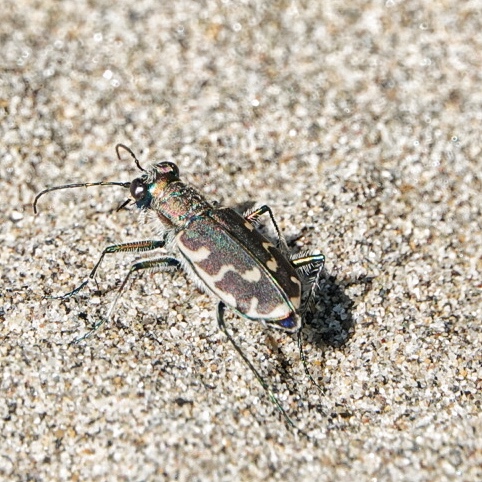
According to a paper (Duran/Gough;2020) that came out last year and cited molecular data, tiger beetles are no longer a subfamily of Carabidae, but are instead their own family of beetles, Cicindelidae. It remains to be seen whether this taxonomic change will be accepted by coleopterists around the world (BugGuide and Wikipedia haven’t changed their classification), and I certainly don’t have a pony in the race, but it sure seems to have made many tiger beetle fans happy.
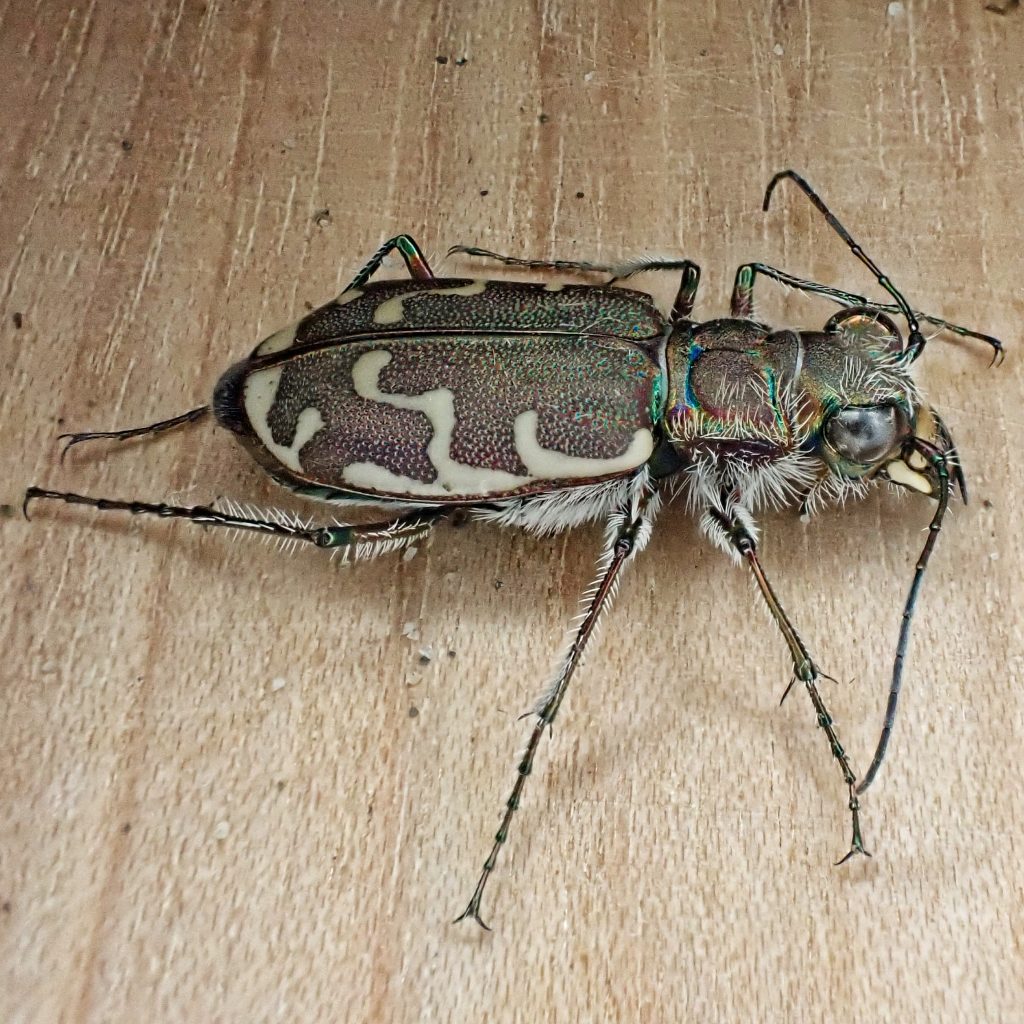
Cicindela repanda have some very interesting traits for a group known to be voracious predators. For one thing, in one study (DS Wilson; 1978) Bronzed Tiger Beetles failed to even attack 2/3 of the seemingly suitable prey species they managed to reach, instead allowing them to move on unmolested. Some of this may have been a choose-your-battles approach with potentially dangerous prey, but the author seems to feel that it is likely that they are practicing ‘prudent predation’ to conserve resources for their larvae.
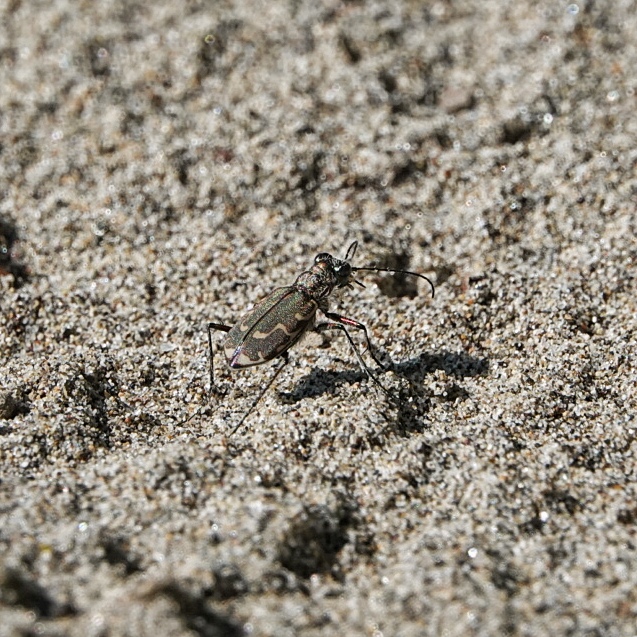
Cicindela repanda does frequently scavenge dead insects and some carrion, and it’s possible that they don’t require much live prey for their sustenance, but most tiger beetles do some scavenging and yet attack live prey whenever possible. And it is hardly energy efficient to make the effort to rush (I talk about how fast tiger beetles are in my profile of C. purpurea) the prey without even attempting to secure the caloric reward. However another study (Hill/Knisely; 1992) showed that Cicindela repanda adults may have yet another food source, since they were found to consume fruit! The study was implemented because, while studying a sympatric tiger beetle, Bronzed Tiger Beetles were observed to eat the fruits of sassafras and pokeweed. They are the only tiger beetles known to practice frugivory. This willingness to eat plant material may be one of the reasons why they can afford to practice ‘prudent predation’, a behavior that could well benefit their larvae and the population as a whole.
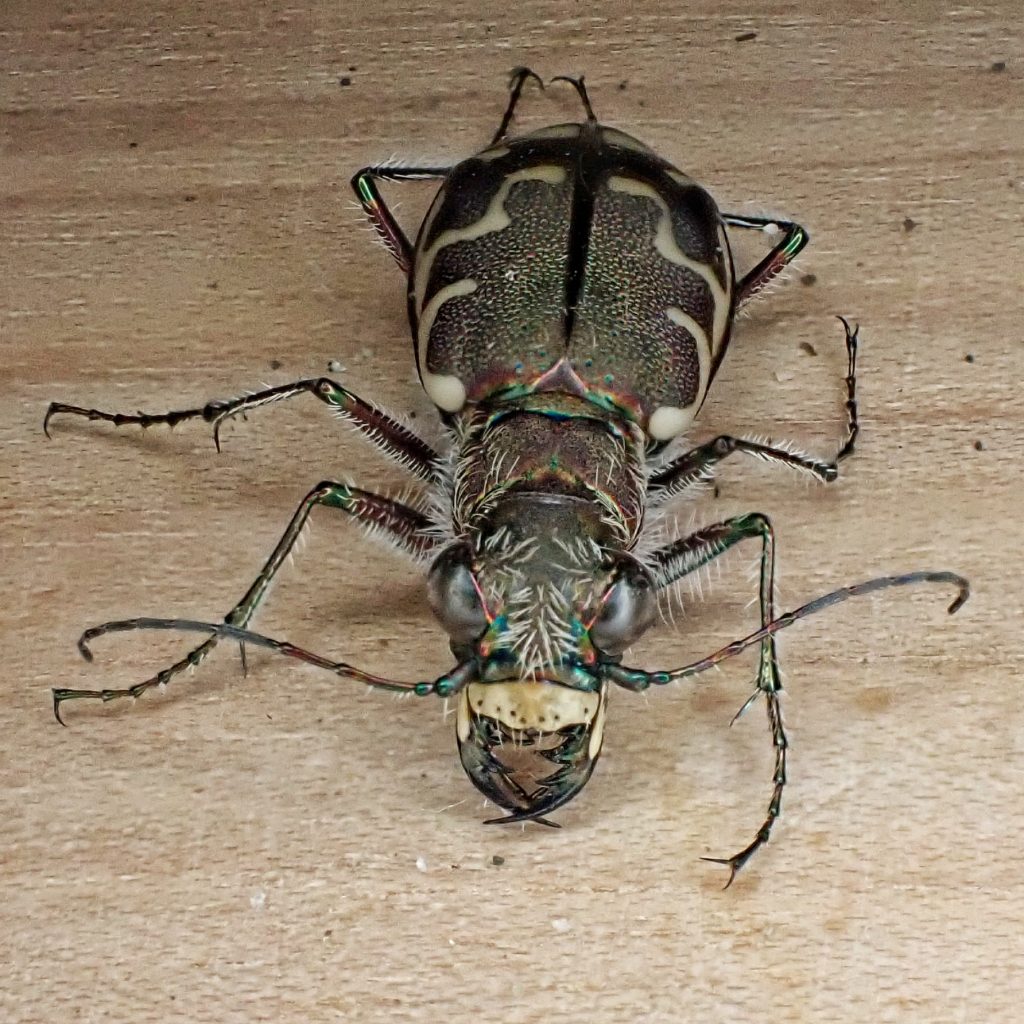
Another interesting thing I learned while researching this profile is that in general tiger beetle adults and larvae can survive extended immersion in water and it’s attendant hypoxia. One study (Brust/Hoback; 2009) showed that Cicindela repanda larvae can switch to an anaerobic metabolism in hypoxic conditions, and can survive over 5 days of immersion. Even the adults can survive nearly a day of immersion, although the mechanism by which they do so wasn’t mentioned. But this does account for why this species can get away with building burrows so near the waterline of rivers that often flood in winter or spring, or are subject to periodic large tidal fluctuations, as is the lower Columbia River where these specimens were found.

I’m grateful to Craig Sondergaard for suggesting that we look for tiger beetles on the beach along the Columbia River, after we had already had an interesting time sifting leaf litter for invertebrates. We saw at least a couple dozen of these Bronzed Tiger Beetles, enough that I was able to photograph several different specimens and collect one for identification purposes. The one I did collect earned its release by being so cooperative after refrigeration that I could photograph all of the salient details, and I returned it to its riverside home today.
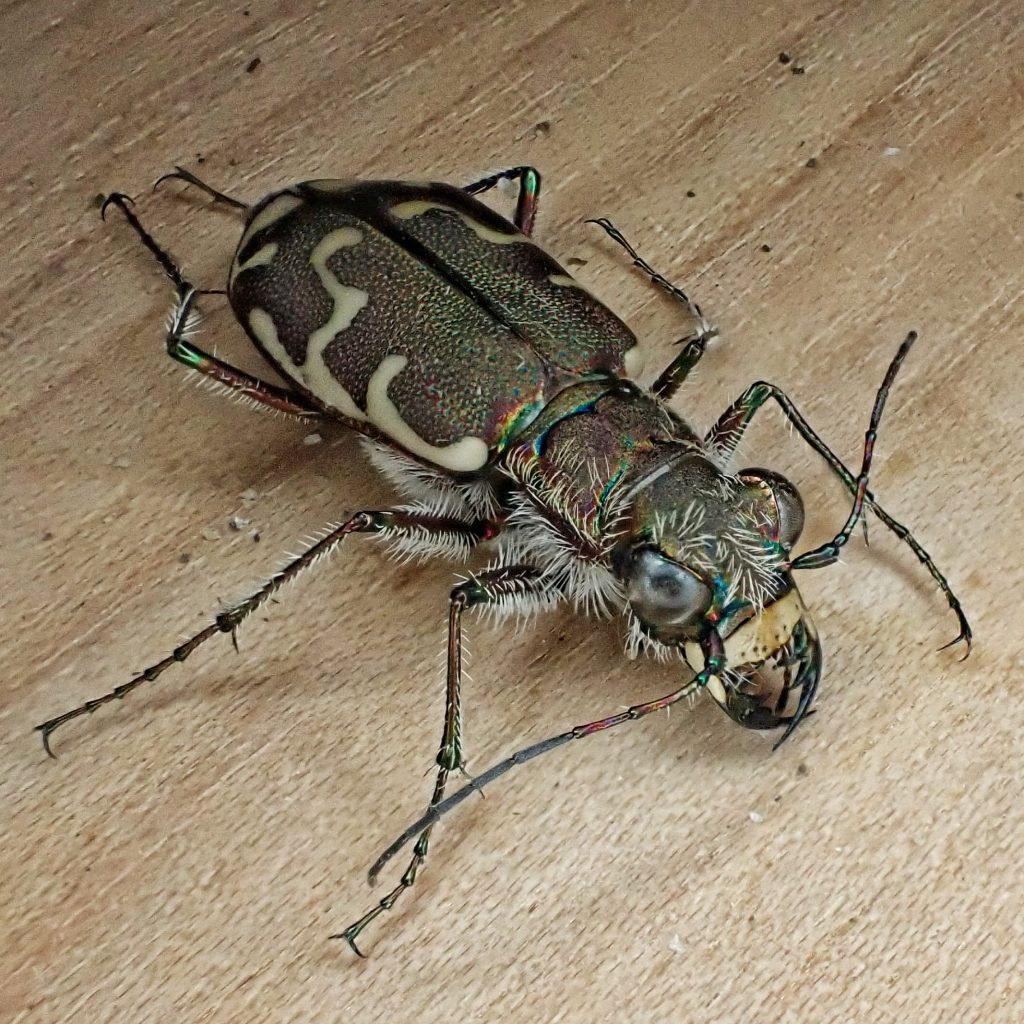
Description– Medium sized (11-13mm long) reddish to bronzed brown tiger beetle with a cylindrical pronotum, and cream to white maculations; shoulder marking is c-shaped; middle marking extends along elytral margin, reaching or almost reaching the shoulder marking, with the line extending into the elytral field bent sharply rearward; apical mark attached to the extension into the elytral field; has erect setae on cheek and frons; single tooth on labrum; 3 setae on first antennal segment.
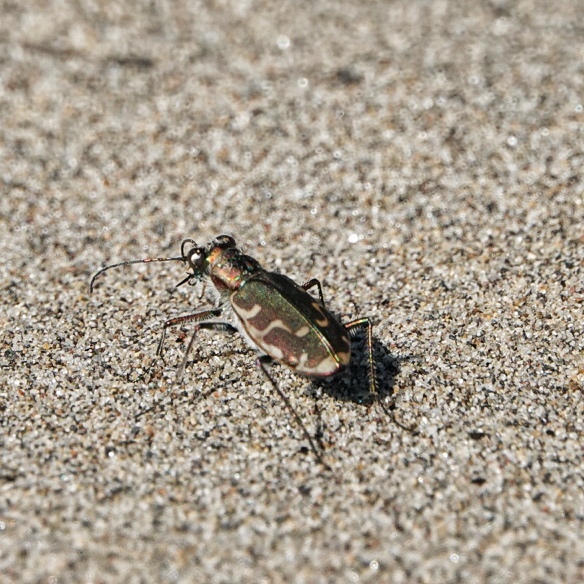
Similar species–C. oregona has shoulder marking reduced to a single spot, trapezoidal pronotum, and lacks setae on frons; C. depressula has middle line curved, and lacks setae on frons; C. hirticollis has no setae on cheek, and somewhat g-shaped shoulder marking; C. bellissima shoulder line points toward rear, has 4-5 setae on first antennal segment, only found in coastal dunes; C. purpurea lacks shoulder marks, medial mark is curving, and apical marks not connected.
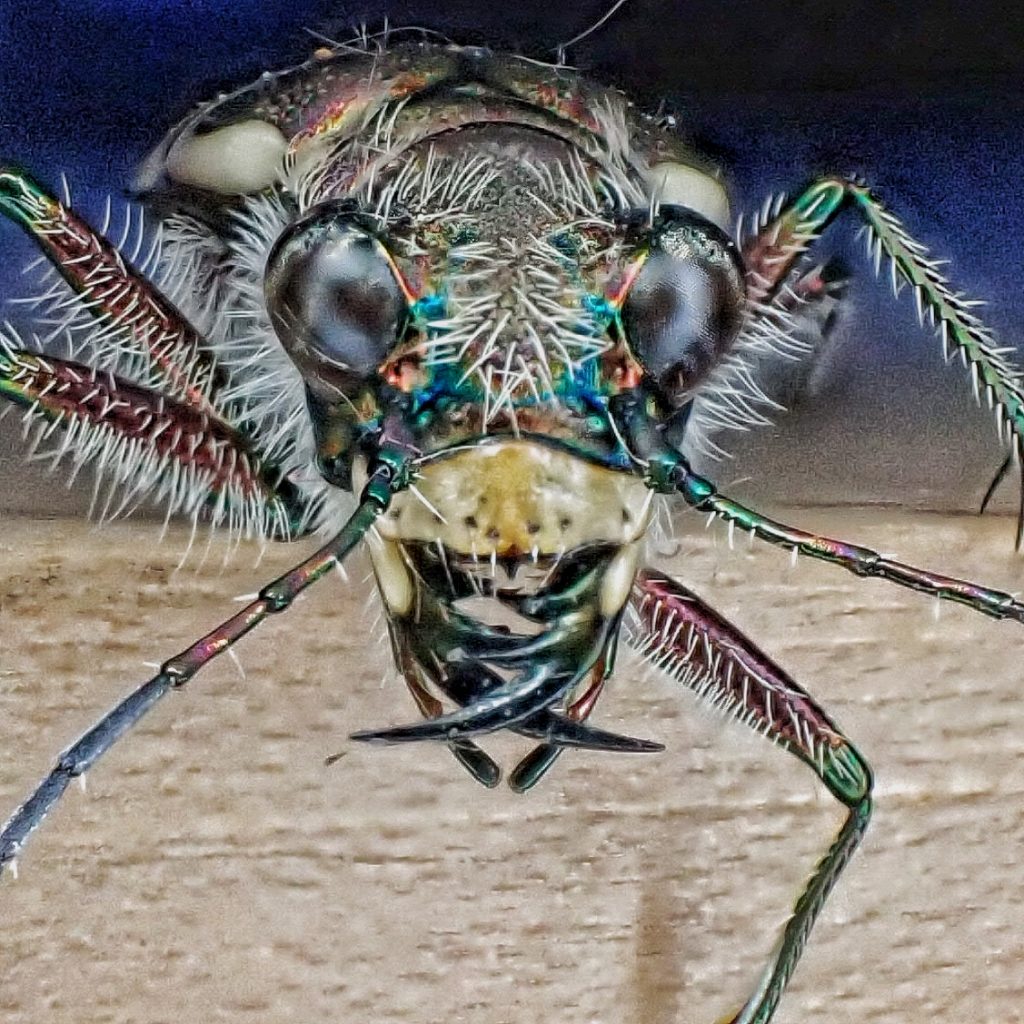
Habitat-Wet and dry sandy areas along rivers, streams and lakes; not found along ocean or estuary beaches in our region.
Range-Most of North America; region wide in appropriate habitat, except absent west of the Coast Range, on the Olympic peninsula, and in se Oregon.
Eats– A wide variety of small invertebrates including ants, springtails, small beetles and true bugs, spiders, and small flies and other Diptera; also eats fruit
Eaten by-Larvae are parasitized by the bee fly Anthrax georgicus; adults and larvae are preyed upon by insectivores of all classes, particularly Asilidae flies and birds.
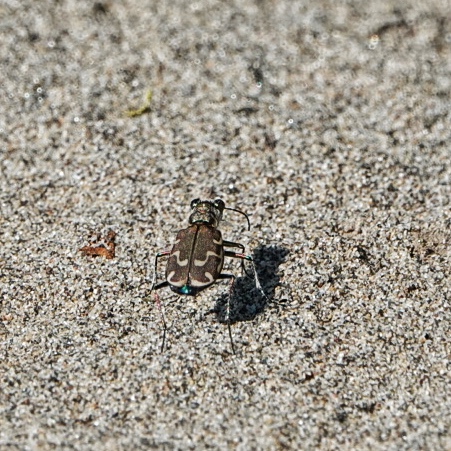
Reproduction– Breeding begins in the spring by adults that emerged the previous year, and courtship is a catch-and-hold-on affair; eggs are oviposited into the soil at locations vetted by the females, who uses her antennae and mandibles to test for texture, moisture, salinity, and temperature, and the larvae live in burrows constructed where they hatch, usually just above the waterline; larvae go through 3 instars; both larvae and adults overwinter in burrows, and the life span is about 2 years.
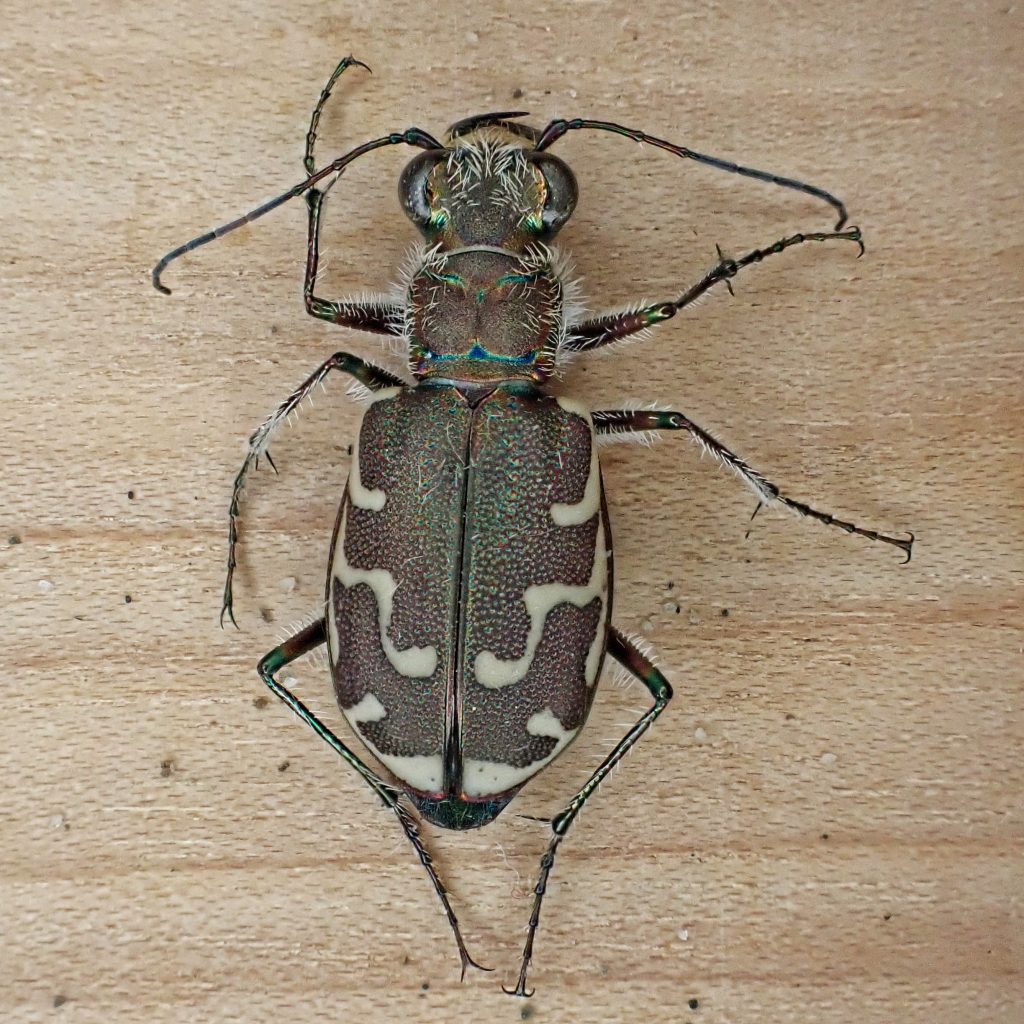
Adults active– Diurnal; mid March to early July for overwintering adults,and again in mid August to early October for emerging adults.
Etymology of names–Cicindela is Latin for ‘a glow worm’. As far as I can tell tiger beetle larvae do not glow, so I don’t know what this is about. The specific epithet repanda is from the Latin for ‘bent backwards/turned up’, and refers to the shape of the medial marking.

https://bugguide.net/node/view/591
https://www.marylandbiodiversity.com/view/13
https://www.jstor.org/stable/4008825
Prudent Predation: A Field Study Involving Three Species of Tiger Beetles on JSTOR
https://digitalcommons.unl.edu/cgi/viewcontent.cgi?article=1000&context=entomologyother
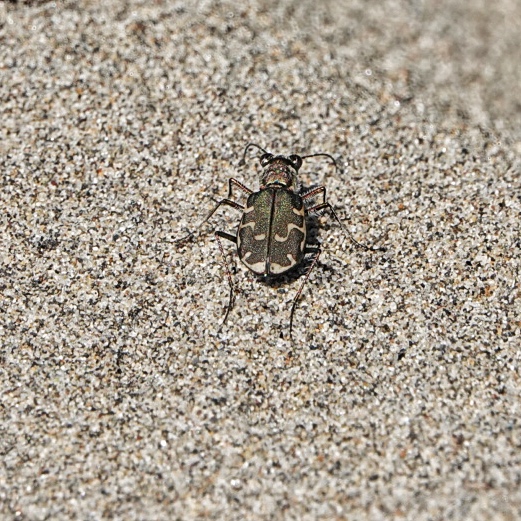
Well done, fantastic website.
Thank you!
Some excellent close-up photography in this article!
Thank you!